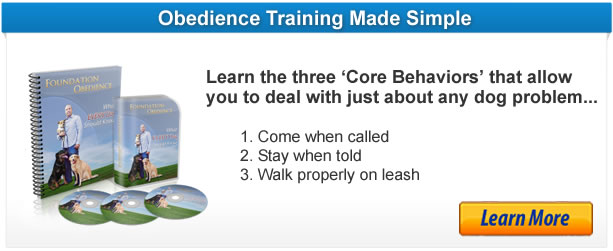The first thing you are going to teach your dog is the casual recall. Probably the best way to explain how to train this is by explaining how most people actually train their dogs not to come when called. I know, I’m sure you are asking yourself why anyone would train their dog to not come when called. Well, I’m sure no one does it on purpose but like it or not, that is what they do.
The average person gets their new dog home and starts to immediately tell their dog to come when called. Some dogs will pick up on the happy tone of ‘come here pal’ and will start to come. They get to their owner and they get petted and praised. Many dogs will quickly catch on that coming when called is a good thing.
It is at this point, however, where most dog owners start TRAINING their dogs to NOT come when called. They take their dog to the back yard to go to the bathroom. The dog goes and the owner calls him back. The dog comes but instead of praise the owner escorts him inside. Fast forward days or weeks. The owner starts to only call his dog when he wants the dog to do something. He calls the dog at the back door in order for the dog to come in. He calls the dog while he is standing next to the crate so that he can put the dog in it. He calls the dog away from his guest because he doesn’t want the dog annoying his friend. In short, he only calls the dog when he wants to oblige his dog to do something. He isn’t calling his dog because he loves him, he is calling his dog with ‘strings attached’. Sometimes he is calling his dog because he enjoys his company but nine times out of ten he is calling his dog to make him do something that he may not want to do.
What happens with most dogs is that they start to realize, “Hey, this guy is always making me do stuff. I don’t want to go in the house, I want to keep playing outside. I don’t want to go in the crate, I feel like staying out.” So not only does the dog realize that coming when called is no fun, he also starts to realize something else, “Hey, wait a minute. When this guy calls me he has no way of making sure I actually come. If he tries to get me I’m WAY faster than him. I am not going to come at all.”
Do you see what the owner has done? He has actually TRAINED his dog to NOT come. Not only has the owner trained his dog not to come, he has trained him how to be elusive and not be caught. He put himself in a position where he designed a command that wasn’t fun and on top of that he didn’t design a way to enforce the command.
So here is what you are going to do. Take your dog in the back yard off the leash. Call him to you, reward him with a piece of his dog kibble or other treat that is quick and easy to scarf down, then immediately release him to go back and play. The last part is a big part of the key. You are going to switch the equation and call him way more than you need to. Think about it, dogs aren’t good at math. If you call him ten times but only one of those times you have him go back in the house or only one of those times you have him enter his crate or only one of those times you oblige him to do something, what do you think will happen? I’ll tell you what will happen. You will break his association that coming when called is always accompanied by some sort of obligation.
So what are the keys here?
- Randomness. Call your dog at random times. Call him when you don’t need him. Call him just to reward him and then release him.
- Variety. Call him at different times of the day. Many dogs learn not to come when called because their owners only call them in the morning right before work so they can put them in their crate. Call your dog morning, noon, and night. In most of those cases you will call, reward, then release him to go play.
- Location. What are your dog’s hot spots? Where are the areas where he is least likely to come when called? Is it by the back door or next to the crate? Utilize those spots and re-condition him around those spots. Stand in that zone and call him ten times and each of those ten times release him so that he doesn’t have to do anything.
- As this is casual don’t demand high precision. With most commands I am looking for a ‘first time every time’ mentality. With the casual recall I might say ‘come’ a few times and not care. Not every command needs such quick compliance.
- Integrate your training. Call your dog while you are watching TV, reward him, and then release him. Call your dog when you are walking through the house. Call your dog when the doorbell rings. What you want to do is get your dog used to coming when called even as normal, everyday things are happening. This is where most people have the biggest problem so this is where you need to focus your training.
- Add distractions at your dog’s pace. I wouldn’t expect my dog after two days of training to do this off leash in the front yard while there are dogs and kids and bikes and other big distractions. Gradually build your dog up to the ability to handle big distractions.
As with every command don’t go too fast. Allow your dog to come along at his pace of learning. By that I mean, don’t use treats on day one then stop using them the next day. You’ve got to take time and wean him off the treats.









2 Responses to “Train Your Dog to Come When Called”
I have a dog named rosa and she responded immediatly to the come here pal technique
Meeri is right my 8 dogs jewel ruby fang diamond emerald kristie crystal and katrina responded immediatly to
the same excact trick.